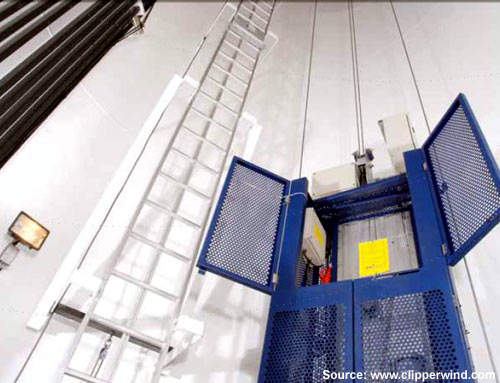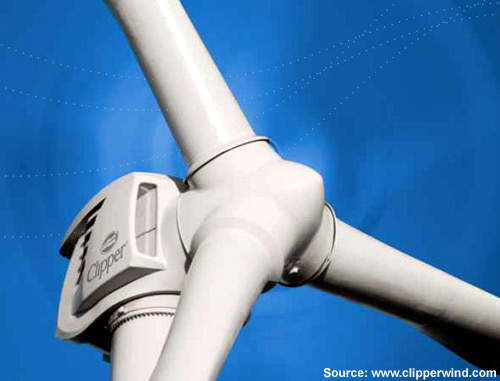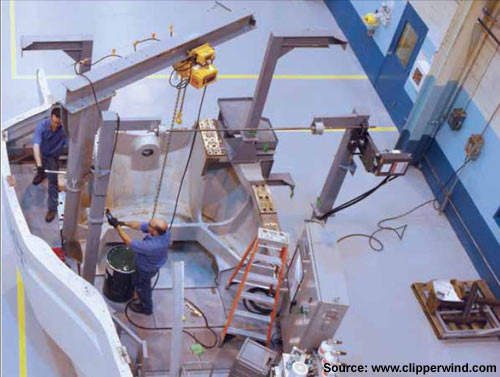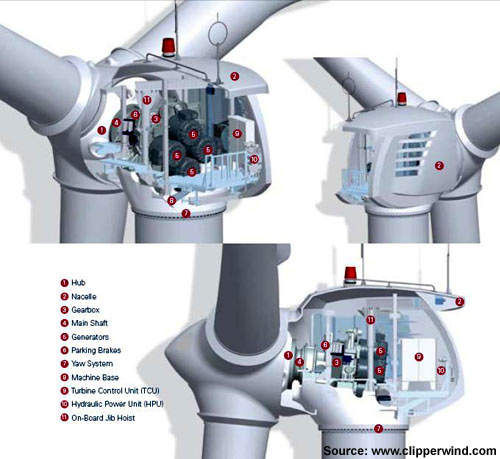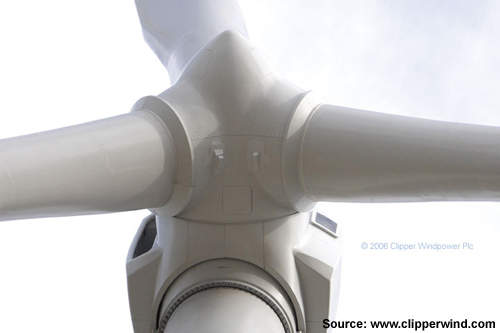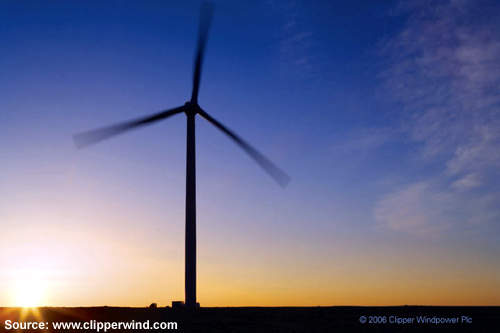The Silver Star 1 wind farm added another 60MW to Texas’ increasing renewable power supply. Silver Star 1 is located 80 miles southwest of the Dallas/Fort Worth metropolitan area. The $100m project is owned 85% by BP Alternative Energy and 15% by Clipper Windpower. The wind farm started operating in September 2008 and is generating enough carbon-free electricity to power around 24,000 American homes.
Silver Star 1 uses 24 Clipper 2.5MW wind turbine generators, the largest built in the US, and is the first large-scale application of Clipper’s new Liberty C-96 wind turbine. The turbine has variable speed with a unique, distributed powertrain, four permanent magnet generators and advanced power electronics.
The project offers rural communities a fresh revenue stream with no impact on traditional farming and grazing practices. The project will employ over 100 people during its construction.
Quantun Drive powertrain
Liberty’s distributed generation powertrain, ‘Quantum Drive’ is a compact two-stage helical distributed configuration. The turbine has a load-distributing, multiple-load path design from the rotor main shaft to the four high-speed output shafts for the generators. Torque loads are split by a factor four times that of the standard three-stage planetary gearboxes typically used in today’s multi-megawatt wind turbines.
Preloaded main bearings absorb thrust loads, preventing damage, minimising downtime and extending turbine life. Unlike many standard drive trains, there are no misalignment problems with the main shaft since this is set through two robust main roller bearings.
The high-speed pinion gear is in ‘cartridge’ form and can be easily replaced using the onboard hoist without removing the gearbox. Multiple inspection ports simplify routine monitoring in addition to an advanced gearbox health monitoring system.
Permanent magnet generator
The permanent magnet ‘Mega Flux’ generator replaces the industry’s most commonly used doubly fed generators, where the rotor is wired directly to dual IGBTs. At lower wind speeds current flows into the generator rotor and at higher speeds current is withdrawn.
As the current is transferred, it is conventionally conducted through slip rings and brushes which require frequent maintenance due to damaging stray currents induced in the generator rotor shaft. These stray currents also often find a way to an electrical ground, arcing across generator bearings. That causes pitting which can lead to costly failures of the generator, turbine downtime and expensive land crane mobilisation.
MegaFlux instead delivers power exclusively from the generator’s stator where it is rectified to DC current. IGBTs convert the DC power to AC current to maintain the desired power factor. Current need not be fed into the generator rotor, so stray currents are not created, preventing arc pitting and bearing failures.
There are no brushes to replace, and no coupling or slip clutch between the gearbox and generator. The low short-circuit current reduces overall short circuit torque, and absorbs fault torques without harming the gearbox.
This arrangement is simpler, nearly maintenance free and operates at higher efficiency over a wider range of power output. Mega Flux is consistent to less than 10% of load, minimising the need for Volt-Amp-Reactive (VAR) correction.
The variable speed system is simple, reliable, and meets the IEEE 519 high-quality power requirements now mandatory in all major electricity power markets. A Turbine Control Unit (TCU) monitors and controls the wind turbine’s performance.
The TCU ensures that the variable speed system maintains a constant unity power factor down to 10% of rated power, reducing the need for VAR correction at the substation.
It also has extended line voltage ride-through capability, enabling the turbine to ride-through faults and line outages for up to three seconds.
Certified for low-temperature operation
In May 2007, Clipper Windpower announced that its 2.5MW Liberty C96 Class IIB and C93 Class IIA wind turbines have received Germanischer Lloyd (GL) certification for operation in extreme cold climate conditions. It is the first wind turbine over 2MW to receive the new GL extreme temperature certification.
Liberty’s standard ‘low temperature survival’ architecture includes metallurgical suitability of components, including main base, rotor hub and gearbox housing. Large, high-strength nuts and bolts are standard, as is special low-viscosity gearbox oil and an immersed gearbox heating system, keeping oil temperatures above 0°C at start-up.
Heavy, cold-weather grease is applied to exposed pitch and yaw bearings. An internal heating system protects sensitive power electronics in the frequency converter and CPU. Liberty also has a generator heater for when the generator is cold soaked for a period of time.

